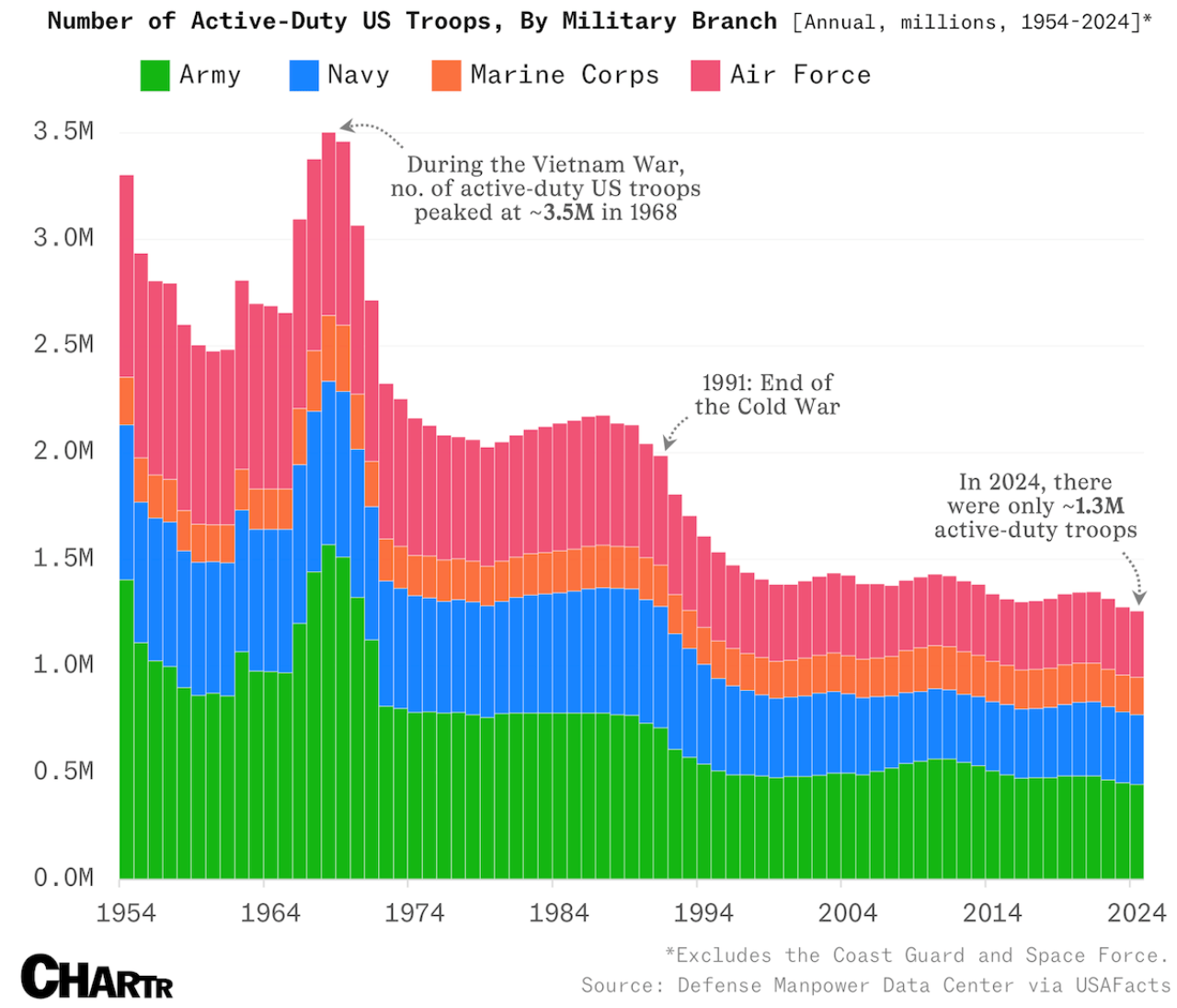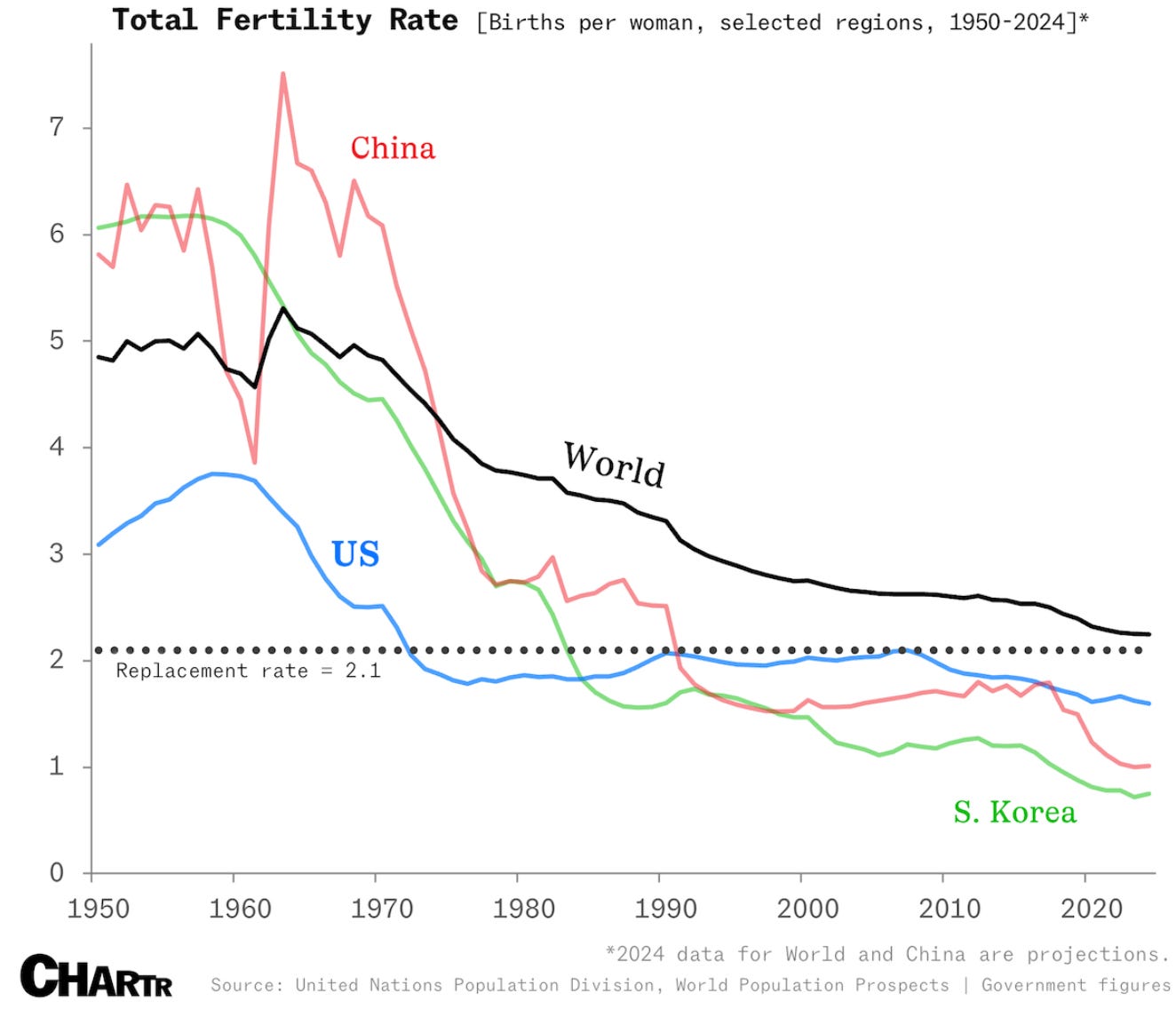584: Who Pays for AI?, Inevitable Ads, Gov't + Intel, Texas Instruments, Musk + Zuck vs OpenAI, Meta + Google Cloud, U.S. Military, Dylan Patel, Protein, Apple + Gemini, and RoboCop
"both a shield and a mirror"
When you're sure of what you're looking at, look harder.
—Richard Powers
🎭 😀😩 Every day, we’re swimming in carefully crafted narratives 🏊♂️
The same ground truth, the same events, can be spun differently depending on what the narrator wants the audience to believe. Positive & negative framing.
I try to keep this in mind as both a shield and a mirror. 🛡️ 🪞
A shield to harden my mind against manipulation and a mirror to remember that my brain does the same thing — filtering, interpreting, and creating stories — for an audience of one: me 🧠
Last week, we took a family trip: The plan was 3 days in Kingston, and 3 in Prince Edward County to see Sandbanks beach and the dunes (hopefully without giant sandworms).
So how did it go?
It’d be easy to show photos and videos of beautiful places and smiling kids. That would give one impression…
…or I could tell you how I came down with a cold on Monday that left me with a stuffed nose, scratchy throat, 3 a.m. coughing fits, and sinus headaches. 🤧
It had been about 13 years since our last visit to Kingston. I don’t know if it’s just bad luck or if the city has truly changed, but it felt like it had really gone downhill. It seemed dirtier and more run-down than I remembered, with lots of homeless people in the neighborhood where we stayed (walking distance from downtown).
Then on day four, right after we got to our Airbnb in PEC, my oldest boy caught a stomach bug and puked all night 🤮
Four people. Tiny Airbnb. One bathroom… 😬
We didn’t want to risk a domino effect of sickness in there, so we packed up and drove home. Never saw the beaches or dunes. (by some miracle, nobody else got really sick, just slightly upset stomachs, but we couldn’t know that at the time)
The same vacation could be spun as great or terrible.
But neither’s correct. As usual, reality’s more nuanced AND whether something is good or bad largely depends on the observer.
The bad times weren’t that bad because we made an effort to keep a good attitude and didn’t spiral into “why us, everything’s ruined?!”, which would’ve kept us from enjoying the good parts.
Ask yourself: Is your inner narrator highlighting the bad and hiding the good from you? 🤨
🎮🤖💭🎂🕳️🔵🟠🌀🔫 Wouldn’t it be cool if Valve made Portal 3 with an LLM-powered GLaDOS? (the game's iconic, passive-aggressive AI antagonist)
You could talk to her about anything, and she’d stay perfectly in character.
A simpler first step might be to take an open-source game with a huge modding community and inject some AI into it.
I would love to see DOOM+LLM (if you’ve seen my YouTube channel, you know)
Imagine how much fun it would be to play a co-op game where the other Marines in your squad are powered by LLMs. You could plan tactics in natural language, they’d call out what they see around corners, you’d hear them react dynamically to the chaos...
📫💚 🥃 Do it! 👇
🏦 💰 Liberty Capital 💳 💴
🤖🏷️ Will AI Run on Ads? What’s the Native Unit? 🤔
Friend-of-the-show Rohit Krishnan has a piece arguing that ads are coming to AI.
I encourage you to read the whole thing, but I’ll boil it down to four main points:
AI models are becoming a commodity: The top AI models from major labs are becoming increasingly similar in capability, and open-source alternatives are catching up quickly.
Product features aren't a strong defense: Companies are trying to stand out by building unique software features and user experiences, but these are also easily copied and don't provide a lasting competitive moat.
Ads solve the "differential pricing" problem: AI is used for tasks with vastly different economic values (coding a feature on software used by millions vs generating a quick bedtime story about princesses and dragons 👸🐉). A flat subscription fee fails to capture this value. Ads are the only proven model that can effectively charge users based on the economic value of their interaction.
AI-powered ads will be highly integrated: Ads in AI won't just be simple banners. They will be sophisticated, AI-generated recommendations, direct purchase links, and even parallel conversations that are seamlessly integrated into the user's chat experience.
Don’t get me wrong, I’m happy to pay a monthly fee to avoid seeing ads.
But we’re heading to a world where multiple billions of people are using AI daily, while tokens-per-day-per-person is also likely to keep going up rapidly. The vast majority of these users will not be willing or able to pay.
As much as people say they hate ads (stated preference), they use Google, Instagram, and TikTok every day (revealed preference).
🍽️ There's No Such Thing as a Free Token 💸
Even if per-token costs keep falling rapidly, all this usage still adds up to real multi-billion-dollar expenses, and VCs won’t be willing to foot the bill forever. Not to mention that we can’t know if future AI breakthroughs won’t push costs up faster than efficiency gains can deflate them.
For example, we’re already seeing how “memory” and larger context windows are becoming increasingly important, and we keep hearing about AI ingesting more multi-modal data from the real world through deeper smartphone integration, AR glasses, and other ‘ambient’ devices.
All this could make the average user more expensive to serve because AIs are expected to “remember” a ton of context from each user’s life and are constantly fed a firehose of video and audio on top of the usual text. On top of that, free users are moving to reasoning models AND will increasingly get agentic use cases where a single query may spawn multiple models that each reason for a while, use tools, and work for minutes or even hours on complex tasks.
That’s *a lot* of inference! 💰💰💰💰
Ads feel like the most plausible way to monetize this gigantic mass of free users. I’ve written about it in the past, and I still think it’s impossible to know exactly how it will play out because we haven’t had the “AI native advertising” moment quite yet.
Search and social media needed time to discover their native ad units. I suspect that something similar will happen with AI chatbots (and later other interfaces, like augmented reality).
🛒🤖 What Happens When Your AI Starts Selling You Things? 🤨
I’ve argued before that a crucial part of this innovation will have to be reassuring users that their AI assistants are still ‘working for them’ rather than being steered by advertisers.
One way to do this is to implement a firewall between the user’s AI and the mechanism that serves the ads. 🧱
What if the ads were controlled by a completely separate model that *can’t* modify the tokens generated by the assistant AI? This separate “ad AI” would have read-only access, detecting commercial intent, and when it finds a match with ad supply, it adds affiliate suggestions or AdSense-type related links in a clearly demarcated box, or whatever makes sense.
I don’t know if that’s a stable equilibrium, or if the temptation will be too high to ‘corrupt’ the main AI to make more ad money 🤔
Hopefully, competition creates incentives for “reliable” AI that gives the best answers and isn’t constantly trying to sell you things or recommending inferior things just because of ads, but I don’t know if those pressures will be enough.
🎩🇺🇸🤝🐜 Uncle Sam Owns 9.9% of Intel (for $8.9bn) 💰
The next chapter for American Dirigisme: The federal government has converted $8.9bn of grants from the 2022 CHIPS Act into an equity stake in Intel.
Oh, and Masa Son and SoftBank also invested $2bn a few days before this… What do you think the odds are that he knew the gov’t investment was coming? (FT has a piece on how Son has been cultivating this kind of access for a decade)
WSJ reports:
Lutnick has in recent months asked other tech executives what can be done to help Intel, even asking other chip companies like TSMC, Advanced Micro Devices and Micron whether they would consider potential deals involving the company.
It’s not entirely clear that this investment on its own changes the trajectory for Intel, but it does signal that more government support is probably coming, and *that* may move the needle.
In theory, the U.S. government should be guided by things like national security, and monetary considerations should play out on a (relatively) level playing field via broad-based taxation.
The government having a financial stake in one company puts it in a weird position when it comes to other companies in the ecosystem (competitors, suppliers). It makes the playing field *obviously* uneven and affects decision-making (do you favor political objectives over commercial ones? Do you favor the government as a shareholder over other shareholders?).
Not to mention the obvious: government ownership of businesses doesn’t exactly have a great historical track record 🚩
Was this the first step toward the kind of consortium I’ve written about, a kind of USSMC centered around Intel’s manufacturing assets?
If it were the case, ideally the government should act as a neutral arbiter and be the coordination layer for such a thing. But now that they have an equity stake in Intel, does it mean they’ll always favor Intel over, say, AMD, Nvidia, or TSMC when crafting a deal?
It’s not exactly reassuring when the referee is wearing one of the team’s jerseys 😅
How does AMD feel about competing with Intel and its new minority partner, the U.S. Treasury Department 😬
What about from the POV of Intel Foundry’s potential customers?
Does this make them feel more confident about fabbing at Intel vs. TSMC because Intel is less likely to fail, or does it make it harder, especially for international customers, because doing business with Intel now effectively means doing business with the U.S. government? Can they trust it?
And what about Intel itself? Can it trust this support? Now they have to worry about business AND political volatility…
“There’s this Darth Vader aspect of the whole thing,” said Gautam Mukunda [...]
Trump called for Tan to resign, then quickly brought him to the negotiating table. [...]
“If your situation with the administration can swing so radically in such a short span of time based on nothing more than a meeting, then it can always swing back,” he said.
Intel’s road will be long and hard, and it’ll take multiple years.
Does the U.S. government have the patience for this, or will it need a scapegoat at the first sign of trouble?
The precedent is already spreading. Now Lutnick is floating the idea of the Pentagon taking equity stakes in defense contractors… What a great way to make it even harder for the industry to be dynamic and for the next Anduril to come up 🙄
🏗️ Inside View: Texas Instruments’ $60bn in U.S. Fab Capex 🐜🇺🇸
I rarely think that videos produced by CNBC are worth the time, except for David Faber’s long-form interviews, but this one is an exception:
It’s a 15-minute look inside some of TI’s 300mm fab investments.
It’s not super technical or deep, but it acts as a nice primer for those who are not familiar with the company, and it’s always fun to look inside these megastructures full of cool machinery.
Elon Musk Asked for Zuckerberg’s Backing for $100bn OpenAI Takeover Bid 💰💰💰💰💰
Apparently, earlier this year, Musk went to Zuck as he was trying to take over OpenAI:
In response to legal questioning, Musk told OpenAI he had communicated with the Meta chief executive about potentially helping to finance a $97.4bn bid for the ChatGPT maker in February, the filing said. (Source)
A bit surprising since, as far as we know, their latest conversation was about punching each other in the face in an MMA-style cage fight… 🥊
It makes me wonder if today’s much more AI-aggressive Zuck wouldn’t maybe have gone for it?
Did he say no because he didn’t see a path to success for the bid (Meta hasn’t been allowed to do large M&A in a long time)… or because he had no interest in having Musk as a partner even if he thought the bid might succeed 🤔
☁️🤖 Meta Signs Six-Year $10bn Deal with Google Cloud
If you’re looking for a sign that Meta is both incredibly ambitious and maybe desperate for more compute, there it is:
Google has struck a six-year cloud computing deal with Meta Platforms worth more than $10 billion [...]
Meta will use Google Cloud's servers, storage, networking and other services
Is Google so GPU-rich that it can afford to sell a bunch to its biggest rival in digital advertising?
And they also compete on AI and on AR/VR-related stuff..
But hey, when interests are aligned, foes can suddenly strange bedfellows. This isn’t that dissimilar from Apple considering a partnership with Google on AI (more on that below).
Byrne Hobart (💚💚💚💚💚 🥃) raises the right questions:
On Meta's end, they've already guided capex for this year to a midpoint of $69bn, and it's hard to imagine what incremental compute is left after that kind of spending. But they're plenty imaginative and will surely come up with something.
This implies that Google has a cost advantage compared to whatever Meta is doing, and that Meta will keep on spending.
On the Google side, it's nice to see this revenue growth but also troubling to think that the best use of their spare infrastructure was to help out a company that competes with Google for attention, talent, and ad dollars.🪖 U.S. Military Active-Duty Personnel at Post-WWII Low 🦅
Recruiting has been below targets in recent years:
Recently, the U.S. military has faced challenges in recruiting new personnel. In FY2022, the Army missed its quota by over 25%. The service did not fare any better in FY2023, again falling short of its goal to add 65,500 new active-duty soldiers. The Navy and Air Force experienced a similar fate in FY2023, each missing the mark by several thousand recruits. Only the Marine Corps and Space Force have achieved their active and reserve component recruiting objectives.
But hey, the Space Force is doing well! 👩🚀🚀
This is a long-term trend, and it’s counter-cyclical to the health of the economy:
Historical trends show that ever since the draft was abolished in early 1973, military recruitment has risen and fallen with the economic tide. When the economy is strong, fewer Americans enlist due to higher-paying opportunities in the civilian workforce. By contrast, when military wages compete with civilian jobs, enlistment is more stable. (Source)
So far, 2025 is on pace to beat 2024.
Mitigating the impact of this trend on overall military capabilities is the fact that the military of the future will be augmented by lots of drones and, eventually, robots.
🧪🔬 Liberty Labs 🧬 🔭
🗣️ Dylan Patel on AI & Semiconductors 🐜🔬
Always a good time, nobody’s more plugged-in the industry 🔌
💪🥩 Protein Intake: What Does the Science Say? 🔬👩🔬
There’s been a protein bull run lately, with increasing awareness about the importance of getting enough.
That’s at least true within the health & fitness community… I kind of doubt most people in the Walmart parking lot are thinking about protein intake per unit of bodyweight too much 🤔
Anytime something gets popular, there’s also a backlash… But it shouldn’t matter what the vibes are. What is the current best evidence telling us?
A common theme echoed by protein skeptics has been the assertion that the US RDA for protein—currently set at 0.8 grams of protein per kilogram of body weight per day, or just under 0.4 g per pound of body weight per day—is “adequate for most people’s basic needs.” [...]
Origins of the protein RDA can be traced back to around the turn of the 19th to 20th century. Because protein is the only macronutrient that contains the element nitrogen (which the body uses for synthesis of amino acids and nucleic acids), researchers at this time sought to establish the level of protein required to maintain an equilibrium between nitrogen inputs (i.e., dietary protein) and nitrogen excretion (primarily through urine).
In other words, the RDA is based on outdated nitrogen balance studies from the early 20th century, which tried to find the minimum amount of protein to prevent muscle breakdown, not the optimal amount for health.
But even worse: This research was flawed because it primarily used a narrow sample of young, lean, and inactive men.
It did NOT adequately account for the increased protein needs of older adults (anabolic resistance: as people age, their bodies become less efficient at using the protein they consume to build and maintain muscle mass), active individuals, children, or women who are pregnant or breastfeeding. 🤰
And if I hear one more time about how too much protein can cause kidney damage…! ARGH. This is not backed by human evidence, we’re not mice 🐁
there is simply no question that optimal protein intake is much higher than the current RDA, just like having a VO2 max at the 90th percentile of the population is better than having one at the 25th percentile [...]
countless randomized trials and meta-analyses have consistently converged on a protein intake of around 1.6-2.2 g/kg/day—more than double the RDA—as the optimal level to maximize muscle protein synthesis (MPS).
Something else to keep in mind: Bioavailability 🥗
If you add up all of your daily grams of protein intake, you have to keep the source in mind:
these protein requirements are based on high-quality protein with optimal amino acid ratios and high bioavailability (e.g., eggs or milk protein), whereas protein from plant-based sources tend to be absorbed more poorly and are less capable of stimulating anabolic processes in the same manner as animal proteins. As a result, the RDA will be insufficient for maintaining nitrogen balance for those relying on plant-based proteins.
🔎🤝🍎 Apple’s Siri: Gemini Inside?
This makes a ton of sense:
The iPhone maker recently approached Alphabet Inc.’s Google to explore building a custom AI model that would serve as the foundation of the new Siri next year, according to people familiar with the matter. Google has started training a model that could run on Apple’s servers [...]
Apple is still several weeks away from making a decision on whether to continue using internal models for Siri or move to a partner. And it hasn’t yet determined who that partner may be. [...]
Earlier this year, Apple also explored partnerships with Anthropic PBC and OpenAI, weighing whether Claude or ChatGPT could serve as Siri’s new brain.
I still think they should let users pick from multiple options. 📲
Maybe they’d have a closer partner that creates a custom model for them, something more deeply integrated into the OS and that can more reliably do tool use and agentic stuff using private APIs and all that jazz…
But users should be able to use ChatGPT or Claude or Gemini based on their preferences. They should be able to link existing paid subscriptions and switch to whatever model is considered best at the time.
🇹🇼🫸🇨🇳 TSMC Removes Chinese Tools from 2nm Fabs 🔬
TSMC will not use Chinese tools in its latest 2-nanometer chipmaking production lines which will go into mass production this year. Production is scheduled to start first in the Taiwanese city of Hsinchu, followed by the southern Taiwanese city of Kaohsiung. The Taiwanese chip titan is also building a third plant in Arizona to eventually make such chips.
The decision was influenced by a potential U.S. regulation that could prohibit chipmakers that receive American funding or financial support from using Chinese manufacturing equipment
What tools are we talking about?
One example: etching tools from Advanced Micro-Fabrication Equipment China (AMEC).
This isn’t entirely new. TSMC has already been removing Chinese tools from its 3nm process since last year, but changing qualified suppliers once a fab is running isn’t easy and takes time. Everything is so finely calibrated that even small changes can affect yields.
🖼️🎨🤖 Buying Taste: Meta Partners With Midjourney 🤝
Alexandr Wang isn’t wasting any time putting his stamp on Meta’s AI efforts:
Today we’re proud to announce a partnership with MidJourney, to license their aesthetic technology for our future models and products, bringing beauty to billions.
This technical collaboration between our research teams is part of our effort to team up with the best companies in the industry whose work and expertise complements our own.
Clearly, if they can’t hire/poach the best talent, they will partner with them:
To ensure Meta is able to deliver the best possible products for people it will require taking an all-of-the-above approach. This means world-class talent, ambitious compute roadmap, and working with the best players across the industry.
Meta’s image-generation AI has been mid for a while.
Not terrible, but it’s not giving me any reasons to use it over Midjourney, DALL-E 3 (now integrated in ChatGPT), or Google’s Imagen.
Let’s see if they can change that and get back in the race
🤰🌎📉 Fertility Watch: Earth Almost Below Replacement Rate 😬
After holding close to 2.1 for decades, the U.S. isn’t doing great lately:
New CDC data released Thursday shows that America’s fertility rate dropped to an all-time low of just under 1.6 children per woman on average in 2024.🎨 🎭 Liberty Studio 👩🎨 🎥
🎥👮♀️🤖 4-Part Documentary on the Making of ‘Robocop’ (1987, Paul Verhoeven) 🎬🍿
Robocop is one of those iconic 1980s films that is way better than it has any right to be.
The title and the concept are cheesy, and on paper, putting a guy in a big robot suit should look ridiculous.
It should be one more empty-calorie action film in an era full of them 🍟🥤
But somehow, they pulled it off. There’s more depth than it seems at a glance. It’s both a fun ride AND a pretty trenchant social satire for the 1980s and this genre of films.
RoboDoc is a 4-part ‘Making Of’ documentary from 2023 that goes into an *incredible* amount of depth into every aspect of the film, with interviews with basically everyone involved (producers, writers, director, actors, special FX people). It was a lot of fun to watch, and I learned a lot about filmmaking (what to do and what NOT to do).
I recommend it.
I kinda wish every one of my favorite films had a 4-part miniseries made about it…







Great post as usual.
Re ads, I just tried Proton's new completely private AI tool that specifically goes against this slippery slope of "surveillance capitalism" model from Social media being ported over to AI tools soon. I agree that most people are going to go with the so called free version as you've articulated. It seems most are unaware of even the most basic aspect of this dilemma, let alone looking at any nuances of firewall between our usage history and ad deliver. I would bet a large amount that the financial extraction model that Meta et al have perfected will move into AI tools widely and quite rapidly. Wall St will demand it before long.
AMD can probably live with intel having to act on advice from trump and the entire universe of stem-free MAGA.
there is also the irony of zuck/musk/trump somehow appealing to the manosphere but all escaping any notion of serious physical combat. best they stay w/WWE , or agree effectively on sumo suits.